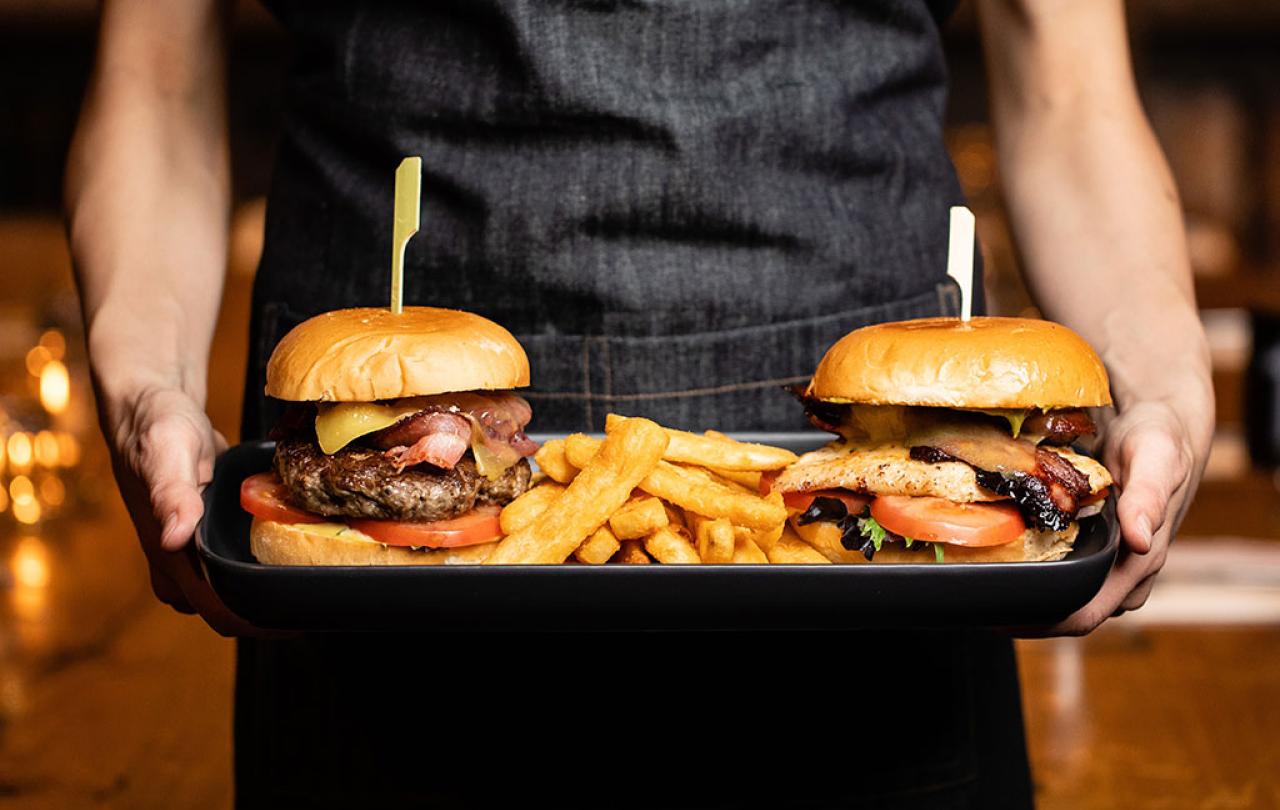
Advent and Christmas are heroic culinary seasons. They are times of abundant feasting on foods from rich and varied traditions. However, despite the enthusiasm many of us share in this overindulgence, we are, as a society, fairly ambivalent about the pleasures of food.
Recently, Tim Hayward wrote a vigorous defence of gluttony, claiming that the Church labelling it a sin, because it defied the practice of self-denial in hope of future reward that he claims the Christian faith is predicated upon. Here, Tim represents a prominent belief in our culture, that taking pleasure in an activity cannot be wrong if it doesn’t have negative consequences on others.
However, despite the prominence of these views, diet culture is still powerful and pervasive. Many of us, perhaps guilt ridden and ashamed, will resolve in the New Year to cut out the pleasures of food in order to drop a few waist sizes.
This encouragement to say no to the pleasures of food, is an invitation to learn the habit of denying our inner yearnings, if they will lead to emptiness.
Over the years, Christians have also toyed with the question of what pleasure we are to take in food. They are certainly far more cautious than the hedonists among us would like. However, they give us a way to navigate between the Scylla of unrestrained indulgence and the Charybdis of starving ourselves entirely.
Gregory of Nyssa, a Fourth Century bishop and theologian, argued that indulging the desire for the pleasures of food can replace our pursuit of those things which are truly good in life. Here, Gregory makes a similar point to Graham Tomlin in a recent article for Seen & Unseen. Gregory gives particular insight into the psychological experience of addiction to physical pleasure. In his biography of Moses, he likens the pursuit of physical pleasures to an enslaved person making bricks. The brick maker is entirely consumed, both in mind and body, with filling the brick cast and baking it. But, as soon as the brick is finished, the cast is empty again, and the process must be repeated. We dedicate our thoughts and our actions to achieving physical pleasures, but as soon as we attain them, they disappear. It is a futile process.
Crucially, some people develop a kind of addiction to pursuing pleasure, they are stuck in the loop of dedicating their minds and bodies to achieving it again and again. They begin to experience emotional turbulence if they can’t attain pleasure, like anger, greed, or anxiety. This pattern of behaviour absorbs these people’s thoughts so much that it replaces their capacity to pursue those things in life which will truly make them flourish. Therefore, this encouragement to say no to the pleasures of food, is an invitation to learn the habit of denying our inner yearnings, if they will lead to emptiness.
The most salient and pervasive examples of this today are digital content and social media. We tend to think of addiction in clinical terms, an extreme form of behaviour associated with people whose habitual consumption of drugs, alcohol, or gambling has run their lives off of the track. However, some psychologists argue for a broader definition of addiction. One which includes the habituation to compulsively consuming social media, the news, and other forms of digital media. For many of us, our compulsion to consume these kinds of content will occupy a great deal of our time and energy, which we could otherwise spend on activities which would make us thrive. Such as nurturing our relationships with God and with others, creative endeavours, and spending time in nature.
A well-crafted meal, especially one received from a long culinary tradition, reveals the power of human creativity, which in turn shows us a glimmer of God’s creative act.
Importantly, Gregory does not suggest that we ought to starve ourselves. A key aspect of learning to say no to the pleasures of food, is learning to say yes to that which our body needs. He explains that our minds are capable of determining how much is sufficient, but our inner yearnings are not. If they are left unchecked, they will cause us to desire to never stop eating. For those of us who are privileged enough to afford it, the solution is to neither punish nor destroy our bodies, but simply to stop when we have had a sufficient amount.
Admittedly, this vision of eating does not sound like much fun. Food and wine certainly afford me great pleasure, not so much in their quantities but in their qualities; what room is there for people like me in Gregory’s vision of the kingdom of God?
In his interpretation of the Song of Songs, a book in the Hebrew Bible, Gregory discusses two kinds of pleasure. He says that there are pleasures of the body, which, as discussed, consume our minds and bodies, replace our pursuit of those things which will help us truly flourish and give us turbulent emotions. However, there are also spiritual pleasures. These are experiences which lift our minds up to God and give us a kind of spiritual ecstasy. Although Gregory does not make this connection, I suggest that food can afford us these spiritual pleasures. The occasional feast can point to the abundance of God’s generosity to us. Fine fresh fruit on a summer's day can teach us something about the goodness of God’s creation. A well-crafted meal, especially one received from a long culinary tradition, reveals the power of human creativity, which in turn shows us a glimmer of God’s creative act.
In this way, Christians have a way of thinking about the pleasures of food which walks the narrow path between the pitfalls of unhealthy overindulgence and mutilation of the body. It is cautious about a pattern of life given over to the pursuit of pleasure instead of those things which will make us thrive. However, it recognises those times in which food can lift up our minds to the divine. So, this New Year, don’t resolve to starve yourself in pursuit of a certain waistline, and certainly don’t give up on discipline altogether. Instead, focus on moderation, and the capacity to say no to unhelpful desires. Let this discipline open up space in your life to say yes to those things which will make you truly flourish.









